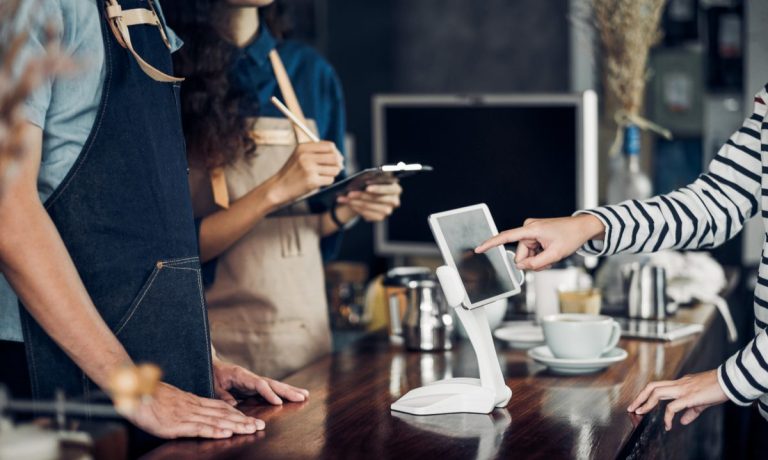
Over the past couple of years, restaurant technology providers have emerged promising a wide range of solutions to restaurant operators to make day-to-day operations flow more smoothly while improving the customer experience.
However, this piecemeal digitization has left many restaurants forced to spend valuable time reconciling their disparate systems, even as today’s challenging labor market makes each minute more costly. With the continuing popularity of digital ordering and the enduring appeal of in-restaurant technologies, it becomes even more important for restaurants to find systems that work smoothly together.
Nick Scarpino, senior vice president of marketing and off-premise dining at Illinois-based fast-casual chain Portillo’s, which has 70 locations across nine states, spoke with PYMNTS about how the stickiness of the digital shift is transforming restaurants’ needs.
“We have not seen any sort of decrease in digital orders as the COVID situation has seemingly thawed a little bit,” he said. “As our dining rooms are now fully open, we thought what might happen is more people would transition away from digital and go back into the restaurant, but that’s not happening at all. The digital business is still growing. It’s still maintaining an increasing share of our total sales.”
The POS Problem
Inside the restaurants, Scarpino noted that point-of-sale (POS) technologies used to be a point of friction for restaurants, with different channels relying on different systems. The system for carside orders was different than the one used inside the restaurant, for instance, requiring additional training and making it harder to consolidate the information coming in through each.
“[Technology] has to do two things. It has to benefit our operations — it has to make us faster, smarter — and/or it has to benefit the guests experience,” Scarpino said.
According to data from PYMNTS’ 2022 Restaurant Friction Index, unifying channels is a top priority for many restaurants. The study was created in collaboration with Paytronix, which drew from the results of a September survey of more than 500 managers of full-service restaurants (FSRs) and quick-service restaurants (QSRs) across the U.S.
You may like: New Data Show Digital Loyalty Programs Are Key Differentiator For Top-Performing Restaurants
Specifically, the study found that 41% of restaurants consider integration of the physical and online customer experiences to be “very” or “extremely” important to their innovation strategies. In fact, this concern ranked above all others, including payment options, ordering options and loyalty offerings as central to restaurants’ technology plans going forward.
In the Pipeline
Two other digital features that the chain is looking toward to improve operations and the customer experience are digital menu boards and improved WiFi.
Scarpino noted that implementation of the former allows the restaurant to surface certain items that they want to encourage consumers to purchase and requires less work to maintain than a physical menu board. The latter, meanwhile, extends the radius within which workers can take drive-thru orders from cars waiting in line.
“The farther out you are in line that we can get your order in, the faster we can make your food and get you through,” he said. “[These are] seemingly straightforward upgrades, but we’re super proud, because these things help us maintain those volumes and allow for more capacity.”
The Restaurant Friction Index, which also drew from a survey of a census-balanced panel of more 2,100 U.S. adults conducted in late October, noted that speed is top of mind for many restaurant customers. Thirty-seven percent said that they would be more inclined to shop with restaurants that offered the ability to pick up orders without standing in line, and 35% said the same of the ability to pick up orders at the drive-thru.
Straight from the Source
As restaurants contend with the challenges of losing the digital transaction to third parties, Scarpino noted that he has been satisfied with the performance of Portillo’s direct channels.
“Even as third parties are still going strong, we have maintained or maybe even a little bit increased our share of the digital wallet for direct digital orders,” he said.
Findings from the Index revealed that 42% of consumers order via an aggregator, and the ease and convenience of the channel is their top motivator for doing so. Meanwhile, for those who have steered clear of third parties, an unwillingness to pay the additional delivery and/or service charges is the top reason they abstain. The second most common reported reason is that these non-users prefer ordering from direct channels.
There are regional differences in how consumers engage with restaurants’ offerings. Research from the March/April edition of PYMNTS’ The Digital Divide: Regional Variations In US Food Ordering Trends And Digital Adoption, created in collaboration with Paytronix, found that, in Portillo’s home region, the Midwest, consumers are significantly less likely to use either aggregators or restaurants’ own loyalty programs than the U.S. population as a whole.
Read more: New Research Shows That Regional Dining Quirks Matter In Tailoring Restaurant Offers
Specifically, the study, which drew from a survey of more than 2,500 United States adults conducted in February, found that just 28% of Midwesterners use aggregators, compared to 32% of Americans overall. Similarly, just 25% of those in the region use loyalty programs compared to 30% of the general population.
“These third parties, they spend more money on customer acquisition and that type of thing than we do,” said Scarpino, “but we’re happy that people continue to come to us directly.”